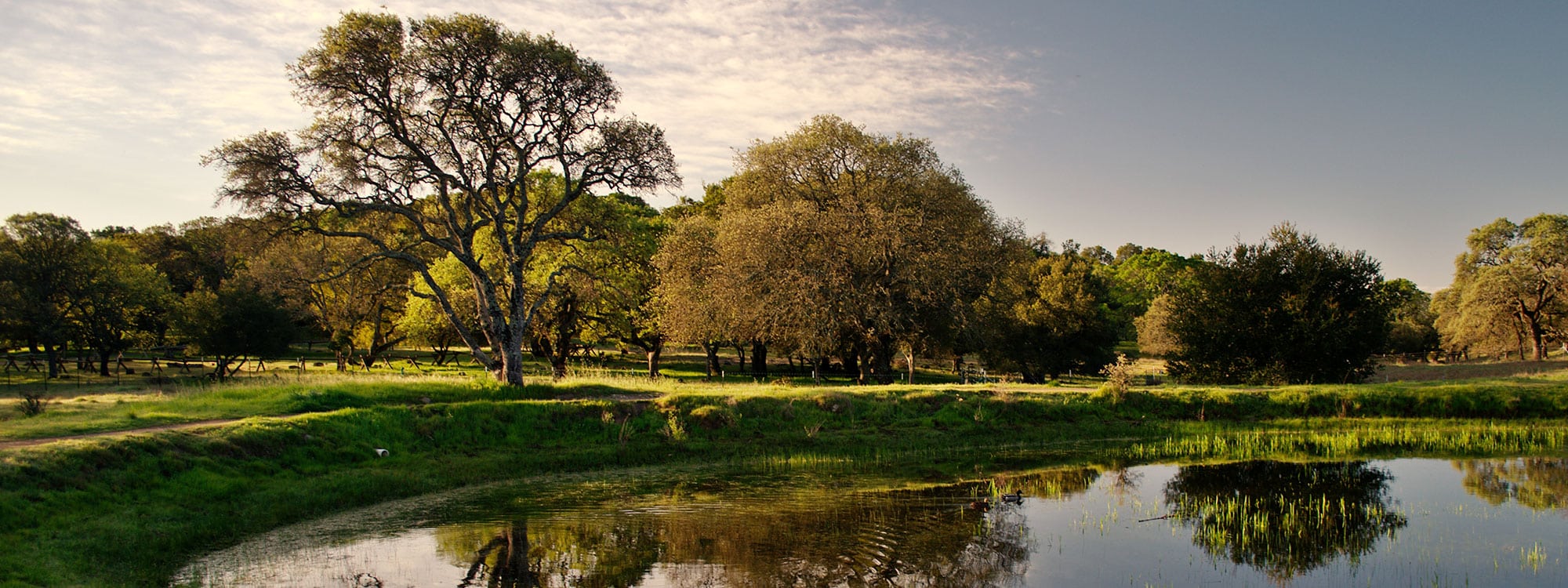Imagine yourself at your favorite park or green space. You are there surrounded by and bathing in the beauty of the trees, plants, wildlife, and spaciousness around you.
Take a deep breath. Notice the crispness and clarity of the air, the birds chirping, the flowing of a nearby stream or garbling brook.
The serenity that can come from an experience such as this is invaluable. Nature provides countless processes that give us high-quality air, clean and bountiful water, and the opportunity to experience and commune with a vast array of wildlife and vegetation.
A countywide park and open space district is designed to protect and preserve the innumerable benefits these lands can provide to humans, wildlife, and vegetation. Studies show that districts provide economic benefits, in the form of increased property values, and many health benefits, as individuals living near a district have been shown to have lower healthcare costs. An often overlooked benefit of park and open space districts—however— is the highly valuable environmental benefits that parks and open spaces provide by protecting large swaths of parkland, ecological preserves, and forests. These environmental benefits provide a buffer to the realities of climate change.
We all rely on the natural workings of our surrounding environment for survival. Left up to its own devices, undeveloped land continually performs countless processes that give us the water, air, and food we need to survive and protects us against climate change, weather hazards and sea level rise. Park and open space districts have a unique opportunity to make their lands and regions more resilient to the realities of climate change.
It seems that every morning we wake up we see the harsh realities of climate change through natural disasters around the world and right at our doorstep. Just over the past year, we’ve witnessed hurricanes in Puerto Rico, Florida, and in the Caribbean and a devastating earthquake in Mexico. In San Francisco, we’ve had record high temperatures. Here in Solano County, we’ve seen huge wildfires and torrential flooding shutting down our major roadways.
According to Tom Robinson of the Bay Area Open Space Council, by protecting undeveloped natural and working lands, open space districts serve as a sort of “insurance policy.” At a time when the full impacts of resource exploitation and climate change are feared and still largely unknown, open space protections are becoming an increasingly critical way to preserve our natural resources and capital.
The East Bay Regional Park District, for example, put together a Climate Smart Initiative which includes a Climate Change Strategy. This strategy aims to mitigate sea level rise impacting the 55 miles of shorelines owned and managed by the district. The Initiative involves wildlife conservation and water quality management, renewable energy projects, and partnering with other research agencies to monitor the effects of climate change.
Here are some of the concrete ways that parklands and open space provide a buffer to climate change:
Reduce Carbon Emissions and Improve Air Quality
According to the Institute for Local Government, forests, parks, and open space lands serve as “carbon sinks” that can store greenhouse gas emissions that would otherwise contribute to climate change. The trees and plants within parklands and open spaces remove carbon pollution from the air we breathe.
Provide Buffer to Sea Level Rise
Studies show that the San Francisco Bay could rise 36 inches by 2100. According to the California Department of Parks and Recreation, even small levels in sea level rise can contribute to the expansion of bays and tributaries. Protected wetlands provide a critical buffer to sea level rise as plants help control the flow of water and filter toxins. Vegetation retains and filters water so that it is not lost, prone to contamination, or likely to cause flooding or drought. The resiliency of marshlands and wetlands and the ongoing monitoring of shorelines is important to combat the damaging effects of sea level rise.
Maintain Habitat Health and Connectivity
Large areas of natural land also maintain habitat health and connectivity, allowing wildlife to find food, reproduce and migrate. Studies show that wildlife is moving upwards in both elevation and latitude as average record temperatures have increased. According to the California Department of Fish and Wildlife, wildlife must be provided with greater opportunities for movement, migration, and changes in distribution. Strategic management of parklands and open spaces through the means of countywide park district could provide these opportunities for wildlife to thrive in our region.
There are just several of the ways that the infrastructure of a countywide park district could address the effects of climate change. As we think about the potential of creating a countywide park district in Solano County, we think about the multitude of benefits that parklands and open spaces can bring to us as humans. In these challenging times, however, we can also begin to think about how a district can serve as a long-term, resilient buffer counteracting the effects of climate change.
To learn more about how we can conceptualize the value and benefits of parklands and open space in the Bay Area, you can check out a new online visualization tool called the Bay Area Greenprint Tool. This tool has incorporated a huge amount of data to reveal the benefits that parks, open space, and working lands provide communities across the Bay Area.
All of the Greenprint Tool’s functions are organized according to nine of nature’s values and benefits: food production, water yield, water quality, water hazard risk reduction, carbon storage, outdoor recreation, prioritized habitats, habitat connectivity, and species and habitats that might require mitigation. Users can specify an area of land and geographically visualize the degree to which each of these nine values and benefits are championed across that space, as well as what policies regulate the natural resources there. Click here to explore the Greenprint Tool.
Photo: Tom Hilton via Flickr




